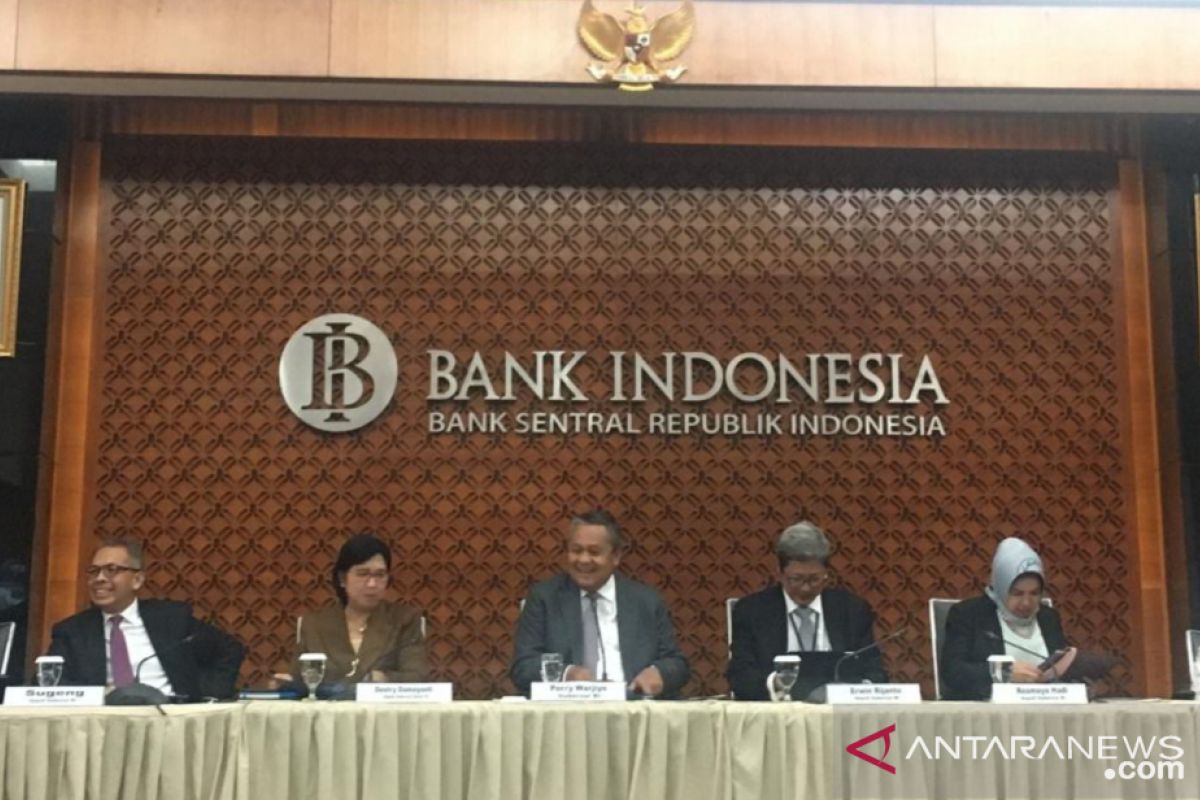BI Governor Perry Warjiyo, told a press conference in Jakarta on Thursday that the demand for bank credit by November 2019 was still on the decline, even though the liquidity in banks was sufficient.
Therefore, the Central Bank tried to be realistic by cutting 200 basis points (two percent) for the growth outlook of bank credit to eight percent as the realization of credit growth reached 12.1 percent in 2018, the governor remarked.
"The Board of Governors discussed factors affecting credit growth. This is due to the low demand for credit from the corporate side," he said.
The decline in this projection also cannot be separated from the realization of credit growth until September 2019. In the ninth months of this year, credit growth slowed to 7.89 percent yoy compared to August 2019, when it was 8.59 percent.
The slow growth of credit is in line with third party funds (DPK) in September 2019, which only grew 7.47 percent yoy or slowed down compared to the August 2019 growth of 7.62 percent yoy.
That way, until November 2019, the Central Bank's latest projections show credit growth in 2019 at eight percent yoy, while third party funds (DPK) grew eight percent yoy.
Related news: OJK slashes 2019 credit growth target to 9-11 percent
Related news: Finance Minister believes trade war will not erode RI's credit growth
Regarding the cause of the slow growth of credit, Warjiyo said there was no problem in terms of the supply of banking liquidity. But he acknowledged that in terms of supply, the distribution of liquidity was not evenly distributed in the Commercial Banks Group of Business Activities (BUKU) I, BUKU II, and BUKU III.
He said the slow pace of demand for credit was the main cause for the slow realization of lending.
Some indicators that illustrate the slow pace of credit demand were the Central Bank survey of the business world which concluded that 53 percent of corporate respondents have not planned their investments for 2020 because they are still struggling with company consolidation.
"Another indicator is the decline in imports of capital goods and raw materials. The condition shows that production activities have not grown rapidly," he said.
In addition, the Central Bank also saw a shift in funding sources. Corporations are now starting to rely heavily on funding sources from the capital market by issuing bonds.
Based on these indicators, BI concluded that credit demand did not yet support the function of banking intermediation.
The projection from BI for credit growth shows the lowest picture for the performance of banking intermediation.
The Financial Services Authority is still setting a credit growth projection at 8-10 percent, based on a presentation during a meeting with the Commission XI on Monday earlier this week.
The Indonesia Deposit Insurance Corporation (LPS) projects that credit growth can still reach 10 percent this year.
Related news: JCR's revised outlook of Indonesia indicates solid economic growth: BI
Related news: Bank Indonesia guarantees liquidity to achieve 12 percent credit growth
Translator: Indra Arief, Azis Kurmala
Editor: Sri Haryati
Copyright © ANTARA 2019












